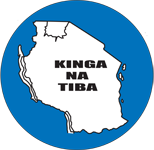
MINISTRY OF HEALTH
Neglected Tropical Diseases Control Program Tanzania

Mass Drug Administration
Last edit: 2015-06-11 17:46:18.
Mass Drug Administration (MDA)
MDA was conducted in three different phases. School based distribution of praziquantel and Albendazole for STH and Schisto control was conducted in March 2014 54 districts in April May 2015 for 80 districts. Praziquantel only distribution was conducted in October 2014 in 46 districts. Community based distribution of Ivermectin and Albendazole was conducted jointly with the immunization and Vaccine Development (IVD) Program campaign in Oct 2014.All 27 regions in the United Republic of Tanzania were involved in the Integrated Measles Rubella campaign. (Tanzania mainland and Zanzibar) but NTD interventions were implemented in 16 regions covering 101 districts. These regions are Dar-es-salaam, Njombe, Iringa, Mbeya, Ruvuma, Morogoro, Tanga, Tabora, Katavi, Rukwa, Mtwara, Lindi, Pwani, Manyara, Singida, Dodoma regions only.
All pre MDA activities were done in an integrated manner, Advocacy and social mobilization, Trainings and drug/supplies distribution. The distribution of Albendazole and Ivermectin was also done together with the distribution of measles-rubella vaccine, Vitamin A and Mebendazole.
The overall coverage figures have improved from last years in some areas and this can be attributed to an improved mop up exercise and Integration with IVD programme.
Advocacy and Social mobilization
Advocacy to high-level Policy makers in the region was done through PHC meeting and it involved District Commissioners (DCs) and District Executive Directors (DEDs) from all District Councils.Social mobilization to community leaders and community members were well done by using tools with support of National Facilitators/ Supervisors. Sensitization of community members was also done through radio discussions -where messages informed the community on the importance of IMRC.
Training for 2014 MDA
Training for Ivermectin and Albendazole MDA was combined with the Measles-Rubella vaccination training at all levels in a cascaded manner. They started with Training of trainers (TOT), Regional Health Management Team (RHMT) and Council Health Management Team (CHMT), Frontline Health Workers (FLHW) and Community Drug Distributors (CDDs).TOT training involved 110 participants from National IVD/NTD Programs as well as the Regional Immunization and Vaccination Officers (RIVOs) and RNTDCOs. Training was conducted through PowerPoint presentations and general discussions. The objectives of this training were to orient participants on the IMR campaign.
Training packages were; Overview of immunization performance, overview of the neglected tropical diseases, integration of MR campaign, personnel and responsibilities, council operational plans for integrated MR campaign, estimation of resources and logistics for implementation, advocacy, social mobilization, Intervention safety, Supervision and Monitoring, Adverse Event Following Immunization (AEFI) and Data Management.
Summary table of number of trainees